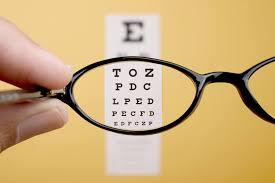What is Low Vision: Common Conditions
Low Vision is defined as reduced vision that cannot be corrected by glasses, contact lenses, or surgery. While low vision can happen at any age, it is a prevalent problem among seniors. According to the American Family Physician, one in three adults over the age of 65 has some sort of sight-threatening condition.
Common Conditions
There are a few common conditions that can cause vision loss among older adults. While these conditions are some of the most commonly seen, this is not a comprehensive list of all conditions that may cause low vision in seniors. Remember, if you feel like you have had a change in your vision, the best thing to do is to schedule an eye exam with your local optometrist.
Glaucoma: When your eye doctor checks your eye pressure, which is different from blood pressure, and looks in the back of your eye at your optic nerve, they are checking for signs of glaucoma. Glaucoma is a progressive condition that causes damage to your optic nerve which, in turn, damages your side vision. If you attempt to view the world through a small tube, you can get an idea of how it can feel to be an advanced glaucoma patient.
When caught early, glaucoma can be treated with medication and surgery with the goal of preserving eyesight.
Age-Related Macular Degeneration: This condition specifically shows up in the older population and affects the macula, which is responsible for our central vision. Individuals with Age-Related Macular Degeneration might feel like they have something dark or fuzzy in front of them. Like glaucoma, Age-Related Macular Degeneration starts slowly, is progressive, and requires regular monitoring and treatment.
Stroke Complications: In some cases, a stroke may reduce our side vision. The field reduction may happen in any direction and can be dangerous because patients may feel like that entire ‘side’ doesn’t exist.
Vascular Complications: This may be due to diabetes, high blood pressure, or stroke within the eye. Here, the visual loss can vary depending on the underlying etiology. Acting quickly at any potential sign of vision loss and taking good care of overall health can prevent these conditions.
Detachments: In some cases, a retinal detachment may cause irreversible vision loss. People who have a retinal detachment report a shower of dark spots and flashing lights. With detachments, time is crucial, so it’s very important to see an eye doctor if flashing lights and many dark spots are noted.
A Note About Cataracts:
A cataract is defined as any clouding of the crystalline lens inside the eye. There are many different types of cataracts and some will affect your vision more quickly than others. In most cases, your optometrist will be able to observe cataracts as they develop and refer you for cataract surgery once cataracts begin to cause a problem.
Once the cataracts are removed, most patients are able to see well at distance and near with a good pair of glasses.
However, in certain cases, a cataract may not be safe to remove, or vision is affected due to surgical complications. In this case, a cataract may cause lasting decreased vision.
There Is Hope
Even if the vision loss is irreversible, there are still things that can be done to improve the quality of life. In fact, Low Vision Rehabilitation is a branch of optometry that is focused specifically on providing tools and solutions to individuals who have low vision.

